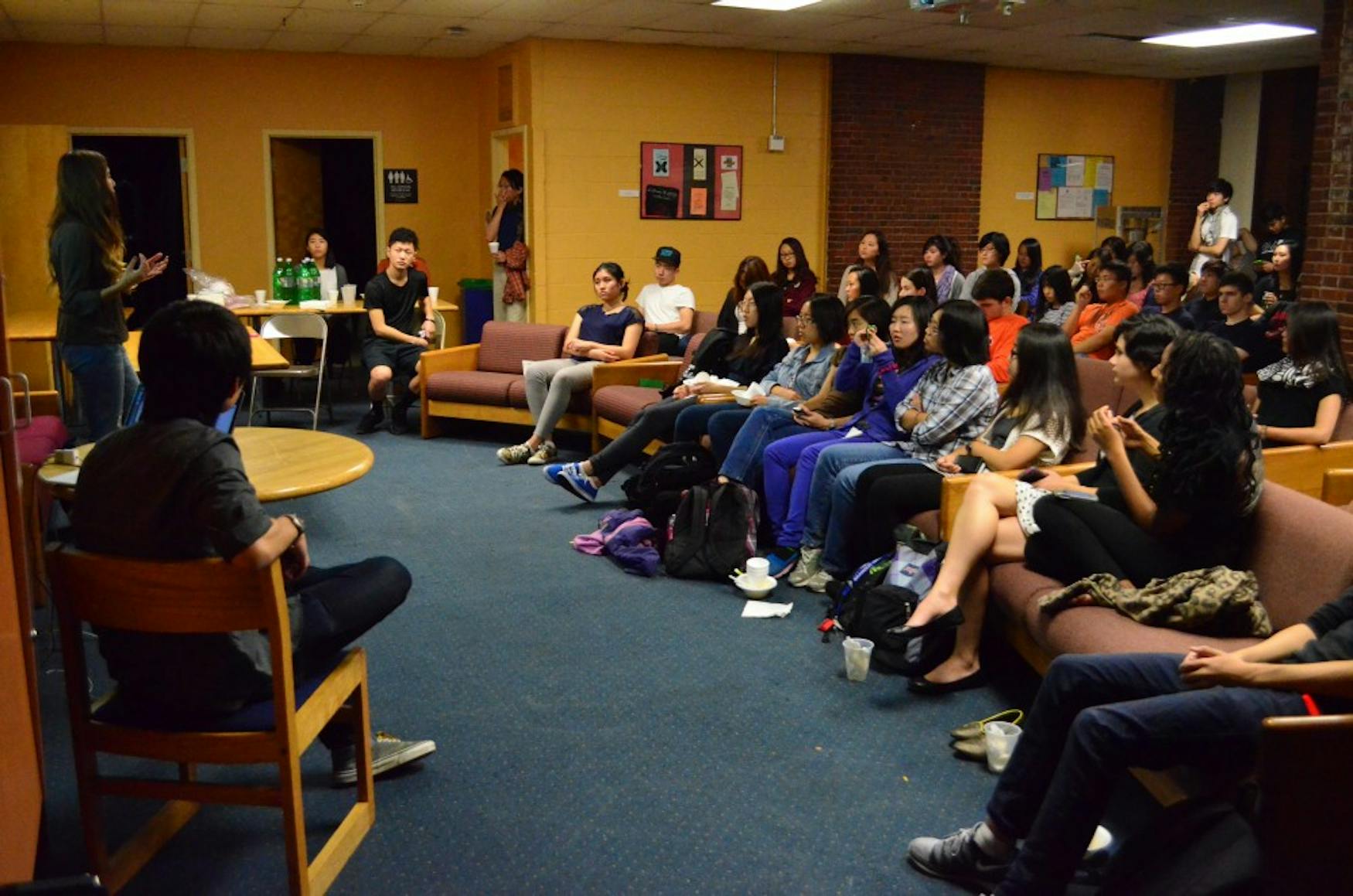Indie film delves into fetishization of Asian women
On Wednesday, the Brandeis Asian American Student Association offered a peek into the world of Steven and his wife, Sandy, through Debbie Lum’s Seeking Asian Female (2012). The film screening was followed by a group discussion and a taste of Korean food. Lum is a San Francisco Bay area director and film editor who has worked on countless short films. This independent film is her feature-length directorial debut.
The documentary film chronicles the relationship of Steven, a 60 year-old, twice-divorced, white American and his Chinese Internet lover, Sandy. The film presents an attempt to explore “yellow-fever” and the impact that the Western fetishization of Asian women has in Asian communities. In this regard, the film is an utter failure.
The audience first meets Steven in his disheveled San Francisco apartment, and the first words out of his mouth are an off-putting attempt to compliment Lum: “I like your haircut. It’s very Chinese.” But Steven does not stop there. As Lum tours the apartment, she films boxes and file cabinets filled with old pictures of Asian women, and Steven even shows her the thousands of pictures of who he says are “his old girlfriends” on his computer.
Sandy was one of these girlfriends of whom Steven kept photos. She lived in China, but after a few visits from Steven, moved to America on a three-month fiancé visa and the two were wed.
Up until this point in the film, Lum emphasizes Steven’s unsettling fascination with Asian women through director voice over and lingering shots of his disheveled masses of collected photographs. But in this moment, suddenly there seems to be a major shift in Lum’s opinion of Steven. The film begins to downplay Steven’s inappropriate behavior.
As opposed to her original disdain, Lum’s commentary becomes sympathetic. She even voices her own hopes for the couple’s happy union
As Sandy is introduced in the film, Lum works to present Steven as more of a loveable, goofy grandpa rather than the much less appealing, sexual ized older man that he appears to be when the film begins.
It is here that the film loses its credibility as a documentary, as Lum loses her objectivity and involves herself emotionally in her subjects’ lives. Sandy and Steven’s first days together are turbulent. The language barrier between the two makes communication almost impossible. Lum steps in as a translator for the not-too-happy couple.
As the film continues, Lum involves herself more and more in the couple’s relationship, coaching Steven or acting as Sandy’s confidant. She becomes less of a director and more of a personal friend to Steven and Sandy. Sandy even asks her to be maid of honor at the couple’s wedding.
One conflict presents itself as Sandy finds thousands of photographs of Asian women on Steven’s computer. Sandy is hurt, and Steven seems more bothered by his lack of privacy than Sandy’s feelings. Regardless, this conflict is downplayed and presented in a way that makes it seem as if finding your husband’s bulk collection of photos of Asian women is as normal a marital conflict as divvying up household chores.
Despite their fighting, the couple remains together as the film closes. But Sandy herself admits that, without the help of Lum, the relationship would never have survived.
With all of Lum’s involvement, the film loses its focus. It trails away from its original thesis—an exploration of “yellow fever”—and aimlessly follows the couple as Lum works tirelessly to keep the relationship alive.
While the film might have failed at exploring the impact of “yellow fever,” BAASA certainly did not. The post-film discussion explored the shortcomings of the film, and, more importantly, the personal experiences of BAASA members with fetishzition, racism and sexism. The group also discussed changes that could be made in the Asian communities of Brandeis and beyond in changing the public perception of Asian-Americans.
The film might have failed at its initial goal, but BAASA’s thought-provoking discussion and scrumptious kimchi rice more than made up for it.



Please note All comments are eligible for publication in The Justice.